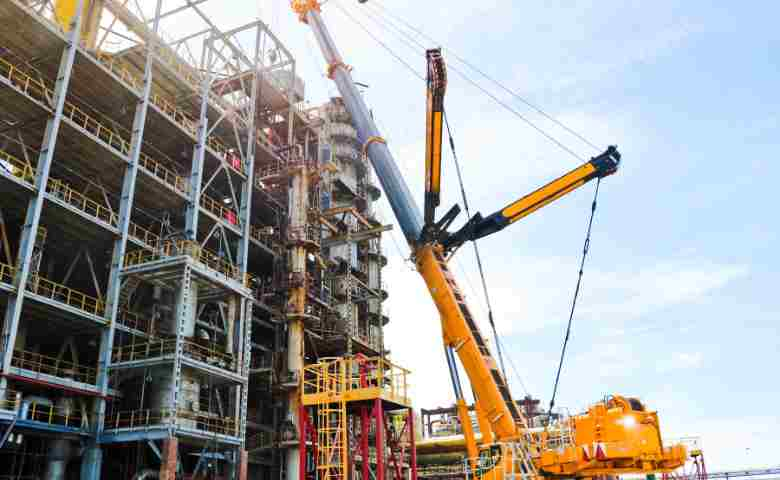Last Updated on February 24, 2024 by Admin
The construction industry is experiencing a seismic shift, transforming traditional practices into a dynamic, technology-driven landscape. This change is not just a fleeting trend but a comprehensive evolution that promises efficiency, sustainability, and smarter ways to build. Read on to discover how these exciting trends will impact your work in the construction industry today and in the future.
Table of Contents
Green Construction For Building a Sustainable Future
Sustainability has become a core principle in construction. Green construction isn’t just about reducing environmental impact; it’s a comprehensive approach encompassing sustainable materials, energy-efficient designs, and innovative construction methods that minimize waste. This trend is driven by an increased awareness of climate change and a collective push towards reducing carbon footprints. From the use of recycled materials to the integration of solar panels and green roofs, the industry is witnessing a paradigm shift. This movement towards sustainability is not just an ethical choice but a financially prudent one, as more clients demand eco-friendly buildings.
The Rise of Construction Technology From Drones to 3D Printing
Technological applications within the construction industry grow exponentially, bringing about unprecedented levels of precision, efficiency, and safety. Drones are now a common sight at construction sites, offering aerial views that aid in planning and monitoring while ensuring that projects adhere to their timelines. Similarly, 3D Printing is revolutionizing how structures are built, allowing for complex designs to be created with reduced material waste and lower costs. This technological leap extends to software and mobile applications that enable better project management and communication among teams. As these tools become more integral to construction projects, the demand for tech-savvy professionals increases, highlighting the importance of negotiation skills for construction managers who must navigate this new landscape effectively.
Practice 15+ AI-generated technical and HR interview questions for Civil, BIM, QS, Planning, HSE and Construction roles. Get instant feedback, improved answers, a 7-day improvement plan, and a full PDF report. Designed exclusively for construction professionals.
One free full interview session included. No credit card required.
The Integration of Building Information Modeling (BIM)
Building Information Modeling (BIM) is one of the most impactful trends in the construction industry. BIM facilitates a more collaborative approach to design and construction, allowing architects, engineers, and contractors to work more closely together from the project’s inception through to its completion. The benefits are manifold and include enhanced coordination, reduced errors, and significant savings in time and cost.
The Emphasis on User Experience and Smart Buildings
As we advance into the 21st century, the construction industry increasingly focuses on creating spaces that are not just structurally sound but also in tune with the needs of another creature—its occupants. This trend towards designing and constructing smart buildings integrates advanced technology to create safer, more comfortable, and energy-efficient environments. These buildings use systems that can learn from and adapt to the needs of the inhabitants, optimizing everything from lighting to heating and even security, based on real-time data. The implications for construction professionals are profound, as they must now consider the physical structure and the incorporation of IoT (Internet of Things) devices and AI-driven management systems into their projects. Many companies in California, including construction companies in the Bay Area, are leading the charge nationwide, pioneering these technologies to create buildings that are not just places to live or work but ecosystems that interact with their occupants in meaningful ways.
Increased Use of Prefab and Modular Construction
The adoption of prefab and modular construction techniques is another trend gaining momentum in the construction industry. Construction companies can significantly reduce waste and increase efficiency by assembling components or entire buildings off-site in a controlled factory environment. This method also allows for faster building times, as parts can be manufactured simultaneously with site preparation and can be particularly useful in areas with labor shortages or challenging weather conditions. Prefabrication and modular construction also offer the potential for higher quality control and can lead to safer construction sites since much of the work is done off-site.
Focus on Safety and Health
With the implementation of new technology and practices, there’s been a significant push towards creating safer work environments for construction workers. Wearable technology, including smart helmets and vests, can monitor workers’ health and safety in real-time. They alert them to potential hazards and reduce the risk of accidents. Additionally, mental health is becoming a priority, with more companies recognizing the importance of supporting their employees’ well-being. This holistic approach to safety—caring for both the physical and mental health of workers—underscores a broader commitment within the industry to its most valuable asset: its people.
Related Posts:
- Best Construction Management Software in 2024: Revolutionizing the Construction Industry
- Top AI Tools Revolutionizing the Construction Industry
- Powering Your Career Pathway: A Deep Dive Into The Promising World of Prefabricated and Modular Construction
- The Latest Trends in Construction in 2024 and beyond


